Don't wanna be here? Send us removal request.
Text
Testing some writing programs! If you want to see my thoughts, you can click through below:
Campfire Write - 4/10 Bibisco - 6-7/10 (recommended Paid, tho) Dabble - 6/10 Gingko Writer - 0/10 LivingWriter - 8-9/10 Manuskript - 6-7/10 Novlr - 7/10 Plot Factory - 7-8/10 Plottr - 10/10 Reedsy - 9/10 SmartEdit Writer - 6/10 WaveMaker App 4-5/10 WaveMaker Desktop 7-8/10
that's me done! So personally I'd recommend either Bibisco Paid or Plottr for plotting, with Reedsy or Google Docs for writing proper. For all-in-one, I'd say either Bibisco Paid, or LivingWriter. Bibisco Paid is best for Plotting, but the Writer is weak, while LivingWriter is fantastic for Writing, and the Plotting isn't the best.
5 notes
·
View notes
Text
WaveMaker App
The App:
Downloaded the WaveMaker app to play with while I got up for the day
Pretty alright, decidedly eh. Wouldn't say it's well optimized for mobile. Have to side scroll a lot which is awkward, in the actual 'write your writing' spots I can't tell exactly what's wrong, and might be missing how to make the text smaller, but I can't fit more than three or four words on a line.
Everything else works about the same as on desktop, planning board might be better if it was vertical, it's a lot of scrolling horizontal and it lags pretty bad, plus when doing so I kept clicking boxes. Weird you can't change the alignment, on the grid planner you can choose horizontal or vertical.
Mind Map plain doesn't work, though. I can make them, but can't go to them, it sticks on the menu.
Also not exclusive to the app, but the original appeal to WaveMaker for me was the amount of templates it has. It's down to three now - it's my understanding that the person who made it was asked to remove the templates, but still something to keep in mind.
I do like that it backs up to your gdrive though, and the way it's laid out is nice.
4/10-5/10?


0 notes
Text
WaveMaker Browser
I like the Wavemaker Browser program more than the app for sure.
Loved the ability to have notes next to your writing document! The default ones show what should be in that scene depending on the template, which I really liked.
The database is super useful! You can tag characters then sort them - so if you want to only view 'secondary characters', or 'humanoid', or 'background', or 'buildings', you can! Would like it better if the images you add that preview showed a different way (maybe as squares?) as they default to a rather awkward horizontal that crops the image. Or even a head's up that goes "images will preview horizontal", but that's nitpicky.

The snowflake tab could be better! At the moment you make one card, then build three cards off of that. When you're done with this three, you replace the first. Would be better if you kept the first. Then you can build three more off each of those, etc. You can export your snowflakes to the writer mode to build off of which is nice! Googling to see where they went after exporting (I'm blind af and missed it), seems people agree that you should be able to keep the original cards.
Planning board is really nice! Like on the app, I'd still like the option to make it vertical, or even to rearrange them so you could group some cards. You're able to add cards manually, but drag and drop would be a nice quality of life feature.
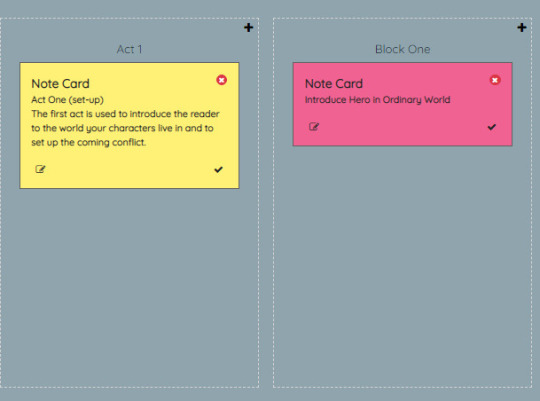

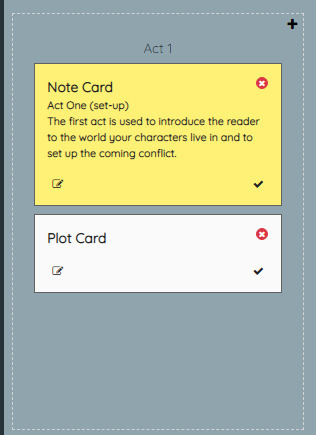
Grid Planner is alright, don't have any thoughts either way on that one.
Mind Map is a nice concept, but was pretty clunky. Often had to try several times to get an image to 'stick' in a box, but I really like it otherwise.

Timeline mode is useful as well - liked being able to stick it in my doc to expand on
Challenge mode is nice in concept. "This is a CHALLENGE, Just write, no going back, no editing. Your work only saves when you COMPLETE the task! If you leave this page, crash computer anything before you click finish - it's all gone! Choose wisely :)"
You pick how many words you want to write in how many minutes. There's five challenges to pick between. I'd like if you could set your own challenge, but that's being picky. Also, do not like that you'll lose your words if you leave the page or your computer crashes. Will not be using challenge mode for that reason.
Like the phone app, a lot of the initial appeal was the amount of templates it had. Unfortunately the creator was asked to pull a lot of them so it's down to Three - Better Novel Project, Three Act Structure, and Manuscript Shredder. You can always build them yourself, and it's not the creator's fault, but it's something to keep in mind.
Again, like that it backs up to Gdrive so you can access from any device.
Overall probably 7-8/10? Love all the features, could probably be pulled off better.
0 notes
Text
Dabble
Dabble is a monthly subscription service, under tiers! So keep in mind that some of these features I talk about aren't available on the basic plan.
First thought: CO AUTHOR? HELL YEAH
Love the set up for writing proper, lay out is really nice. Also?? it lets you split the scene?? and adds a neat little separator? as well as letting you split to the next chapter, I really like it. Also lets you insert an image - as well as search Unsplash for an image without leaving the tab. You're also able to go back and merge scenes.
Going through the user interface:
I like that it has a spell checker, as well as a style and grammar check. Also a dark theme is always great! It also prevents double spacing if you want which is nice. DICTIONARY DICTIONARY DICTIONARY. You can add your own words so it doesn't flag them. As someone who uses weird-ass names, and writes fantasy, this is amazing. Also you get a LOT of data space to use, 300 GB.
There's a space for story notes - this includes worldbuilding and characters. These don't have any templates, only a space for a title, then an empty document. Pretty 'eh', I personally prefer templates but you can make your own so that's up to personal preference. Not sure if it was a glitch, but while I could click to add images and search unsplash for worldbuilding I had to drag and drop images for characters which was weird.
I liked the plot maker. Was a bit too sensitive (kept accidentally making new plot boxes), so having to click a spot, then confirm that I'd like to make one would be nice. Personal preference again, though. Liked the lay out. You can also put plot lines under worldbuilding, not sure how it could be done but would be neat/nice if they ported over to the plot maker so you don't have to type twice. QOL, though, not a necessity.
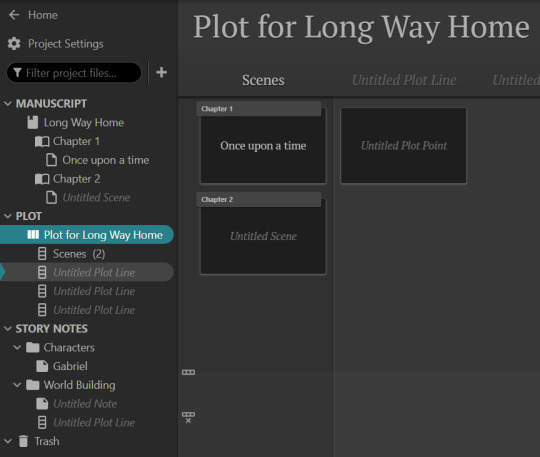
I do like that you can duplicate projects. Since there's no templates (almost a necessity for writing programs for me, not a necessity but definitely something I'll lean towards) I'll have to make my own. I don't always use it when I plot but I definitely use Save the Cat more often than not, which has 15 beats/3 acts, and it can get tedious remaking it over and over. So being able to make a template and duplicate it is nice.
Overall probably 6/10? Not my favorite, probably not something I'd be willing to pay for. If I co-wrote I'd probably use it, though.
0 notes
Text
Plot Factory
This one's pretty neat! You can use it either free, which allows you to write only one story no matter how many 'universes' you have, or upgrade to one of three tiers and unlocked various features. I tried the free version.
Plot Factory lets you create 'universes', which I really like! You can pick an image to represent each universe, give them a title, and a summary! Then you can add properties, laws, settings, themes, and anything else to the universe, which is pretty neat. Being able to move them around would be nice - put them into boxes, or color code them, would be helpful for keeping track, as at the moment it's just a column of text. But that's personal preference.
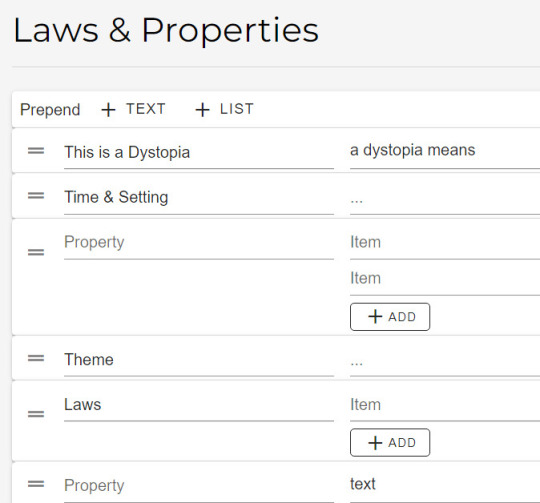
You can sort your stories by universe, as well. So if you write a few shorts for a certain dystopia, then you can have them all under that world. I like this! It lets you easily check that you're keeping it to the 'rules' you've already established for it, and add to them as you go. You're able to add an image and summary for each story but, whether I'm just blind or its locked behind a subscription, I couldn't figure out how to. (edit: you have to go to the 'general' tab, not 'write', and you can edit the summary, genres, and image for each story there)
A lot of features are behind subscriptions. Such as having your story read back to you, plotting your story out beat by beat within the story itself so you can easily view it, viewing multiple drafts, and making a chapter summary. However, you can still make notes next to your chapter, and it's workable without subscribing.

There's an in-app session word goal set, which is nice! That's always something to like. And I haven't seen it on any program before, but there's also a name generator! You can set gender, language, and popularity! Definitely a MAJOR plus for Plot Factory.
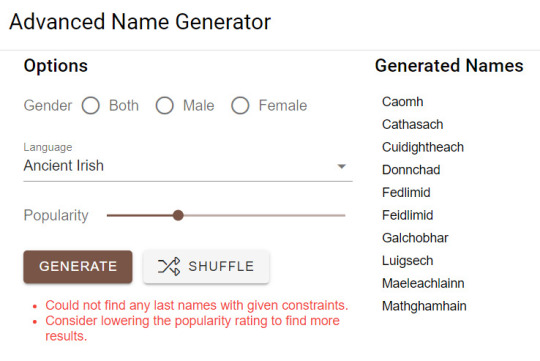
Once you set up your characters - there are characters sheets! There's an open spot for any text you want to write, as well as lines to fill out, though you can change the entry. There are 'comprehensive' sheets available to subscribers. - you can important them to any other story in the same universe! Same with places, objects, and elements.
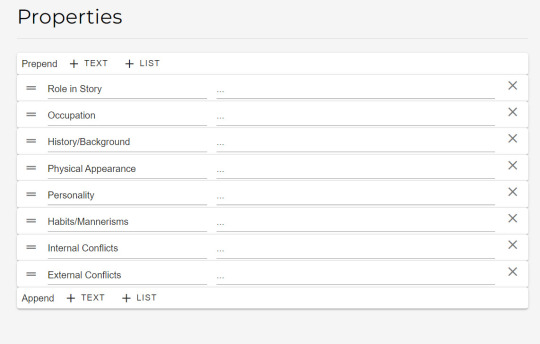
PLOT FACTORY HAS TEMPLATES. They have the Three Act Plotting Structure, what they call Story Beats Plotting Template (it appears to be Save the Cat), and Story Premise Worksheet. These open as a single text document to fill out - if each one was broken up to acts/beats/etc to fill out it might be nice, less 'block of words', but that's personal preference and QOL, not something super important.
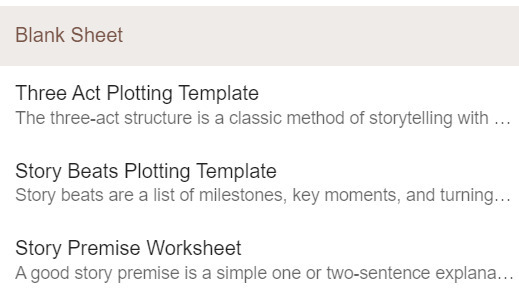
There's also a 'Plots' tab, but it's subscriber locked so I'm not sure what it is.
Also a general 'Notes' tab, where you can make little documents for whatever you need.
The statistics tab is great, and I really like it! You can set a word goal and it will tell you what % you are to it. You can also see how many words you've written each day on a graph, which can either be a blessing or a curse depending on if you're discouraged by seeing that. Also has a word count breakdown to show you how many words you have per chapter, so you can see if there are any with a lot more/less than the rest. It also shows you your overused words and phrases, which is useful!
Like Dabble, you can collaborate if you subscribe!
I'd say probably 7-8/10? Probably higher if you subscribe for the extra features.
0 notes
Text
Manuskript
First thought: do not like the layout.

this is awkward and took me a minute, but it could just be me being an idiot tbh. Also probably more useful for someone who is better at planning ahead. You can edit it later, though.
Going tab by tab:
General is alright, I like the book information you put down. Title, subtitle, series, volume, genre, Author Name, Author email.
The Summary is pretty nice! You start with the situation - a "What if..." that you finish. Then you do a one sentence summary, then a one paragraph summary. Then you turn that into a one paragraph summary, then into a full/proper summary.
The character tab is nice! You can sort your characters under Main, Secondary, and Minor. Each character you can assign a color, either from a 'list' of colors or the color wheel, to go by their name, then whether they are a POV character or not. Then there are places for their motivation, goal, conflict, and epiphany, then their one sentence and one paragraph summary. There are three more tabs under each character - summary (for a longer summary), Notes, and Detailed Info, where you can pick a trait then a description. I always prefer to have a place for images, but you can link them in notes or somewhere else. Not my favorite layout for characters, but better than just a blank document.
Plots: I really like this! You can make a Main, Secondary, or Minor plot. These can be titled, and you can add characters from your character lists. There's a spot for a description, then a result, as well as a one paragraph, one page, and full summary. Under the second tab for each plot is the 'resolution steps', where you can insert what beat it is on various plot structures such as Hero's Journey, then a summary for that. Really love the plots tab!

Under the world tab you can insert any number of items, rules, laws, etc. If you press the heart (I missed this at first), you can auto populate with a large amount of empty tabs for Fantasy Worldbuilding. These include Physical (such as flora, races, climate), Culture (education, food, customs, medicine), Magic Systems (rules, objects), Important Places, and Important Objects. I hope they'll be adding others! Under each of these you can add sub items, with names, descriptions, and other notes.
Outline is really good too! You can set the POV character, the status (To-Do, First Draft, Second Draft, Final), and label it 'Idea, Note, Chapter, Scene, Research' in case you've opened the tab for something other than writing proper. You can also choose a word count goal for each chapter and scene, and it will track how many words you have for each, as well as what percent you are to that goal. There's also a tic box to mark the chapter/scene complete.
Editor is where you'll actually write. You can open one chapter at a time, which will show each scene as a note card, or Outline, or you can view all the text depending on how you set it. You can give each scene a title, or leave it as 'New'. While I love everything else about Manuskript, I feel like the writer proper is the weakest part. I could not find a way to change the font type or size, or indent. And while some people prefer markdown, I'm not personally a fan.

So as a plotter, I'd rate Manuskript at 8/10. But the writer proper at 2/10. So overall it's a 6-7/10.
0 notes
Text
Gingko Writer
Gingko Writer hurts my eyes.
I gave up and closed out of Gingko Writer quickly. While I'm sure it works for some people, I got frustrated clicking through it and trying to find where I was just working. Not having an index really threw me off, and it just didn't work for me.
For me personally, 0/10. Didn't fit my writing style.
0 notes
Text
SmartEdit Writer
why does opening SmartEdit Writer make me think of typing lessons in elementary school.
Just looking at it, definite 'Microsoft Word' vibes.
You're able to click and view a guide on SmartEdit's website, but having an optional tutorial in-app (in-program?) would be very useful. However, there is a pre set-up project of Huckleberry Finn so you can see what it should look like, and poke around.
SmartEdit has a lot of features, and having an easily accessible tutorial would really help.
When it comes to the writer itself, it's heavily modeled off Microsoft Word, down to being able to pick different Microsoft Word 'skins'. You are able to have Notes visible next to your writing project, which is super helpful! You're also able to search your document for the following things:
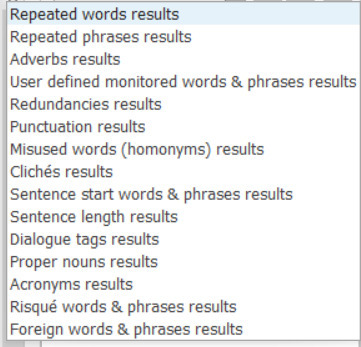
You are able to save links in your research tab, which can be put up over your notes, as well as images.

Over all I'd say SmartEdit writer is better as a writing program than a plotter. 8/10 as a writing program, 2/10 as a plotter. So 6/10 overall.
0 notes
Text
Bibisco
Bibisco has a free version, and a paid version. The paid version is a minimum of 23€+VAT (22.5 usd), although you can pay more if you want. This is a one-time payment, not a subscription. When you first download Bibisco, you have a 30 day free trial of the paid version.
At every step, you are able to set whether what you are working on is complete, not yet complete, or to be done. When you start something it will automatically be set as to be done. At your project overview, you can see how many of each you have (characters/scenes/narrative strands) and what percent is complete, which is nice.
You start with the 'architecture' of your novel. The premise, fabula, setting, and notes. These all open the same way: you click get started, then get a big empty text box to fill out. Notes itself is paid version exclusive, so if you are only going to use the free version then you'll need to work out where to put anything else.
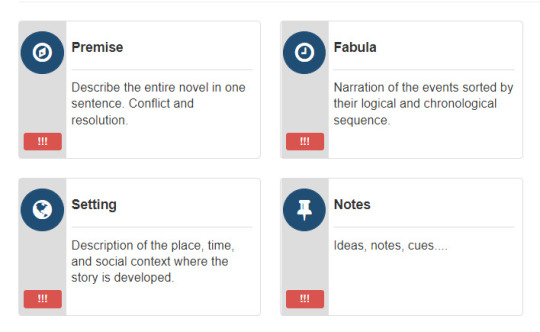
I really like how they have the characters set up. You can make a character under Main, or Secondary. Secondary characters only get an empty text box, but Main get a lot more. Free version gives you only 'personal data', which has you fill out first name, surname, nickname, gender, age, birthplace, residence, education, and financial situation. Paid gives you access to boxes for physical features, behaviors, attitudes, psychology, ideas and passions, sociology, and 'life before the story's beginning'. With the free version, you can write down their conflict, and how they evolve through the story.
I think Bibisco needs an empty textbox, or place for notes, under the Main characters as well.
You can also save images under both Main and Secondary characters - but need the paid version to give them avatar images that will show in the character almanac. With the paid version, you can also make a timeline of their life with either the gregorian timeline (down to the minute!) or your own calendar.
You can make locations - the nation, state, and city are optional, but the name is necessary of course. Then you have an empty text box and, like with characters, can save images under it, and Paid members can make a timeline and save an avatar.
Paid members can make Objects.
Paid members can make 'relations', where you can draw how people are related, or really anything you want.
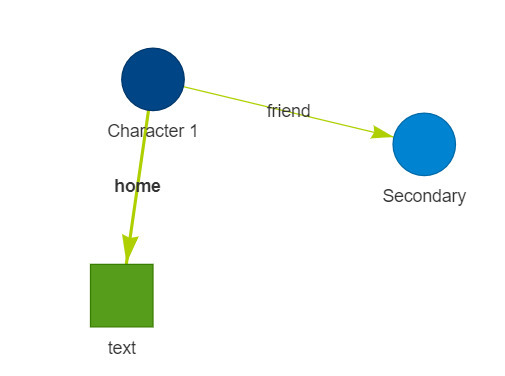
Paid members can access a notes tab. Each note is just a title, and an empty text box.
The writing program itself is alright, nothing special. Basic members are able to access a notepad for each chapter, and there's a place to put the 'reason' for the chapter, described as 'What role does this chapter play? How does it contribute to the development of the novel?' Then you make each scene, title them, and write them in the same sort of text box as the rest of Bibisco. Bibisco tracks how many words and characters you have in each scene, chapter, and your overall story, which is pretty useful! You can also create another 'revision' of each scene, which copies it into a new scene, so you can edit it without losing your previous version! I love this. You can also tag your scenes with the POV, which characters show up, the location, special objects if you've made them, when, and what narrative strand it belongs to.

There is a search function, but it is only available to paid members.
There is a timeline so you can see on what day at what time you worked on what, but it is limited to paid members.
The analysis is really useful, and fun to look at! It shows the length of the chapters in a bar chart, what percent of the story each characters shows up in, a list of scenes in which each character appears, what percent of the story each location and object appears in. It also shows where and when you use which POV and narrative strand!
You can export to PDF, docx, txt, epub, and archive, and each one lets you format before you do.
My major issue with Bibisco is the functions kept behind a paywall. While it's alright to keep them behind the paywall (I'm absolutely willing to pay!), the way it's done on Bibisco is frustrating. You don't know what's behind the paywall until you click on it - and then you get a pop up, have to click a button, wait five seconds, before you can move on. It's a minor thing, but when it happens repeatedly (clicking Objects, then Relations, then Notes) it gets annoying. Having the options grayed out, unclickable, or a locked symbol - or having the option to click 'don't show again' - would be a lot better.
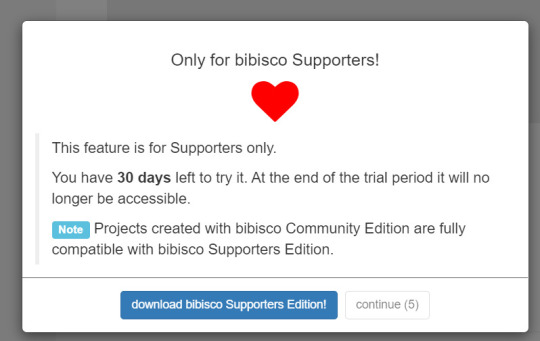
Overall I'd give Bibisco free a 6-7/10. If you use Bibisco, I'd recommend paying for it - Bibisco paid is probably 8-9/10.
0 notes
Text
Novlr
I am a simple man. I see a gradient, I upvote. Or whatever the vocal equivalent of an upvote is.
NOVLR HAS AN AUTOMATIC EASY TO UNDERSTAND TUTORIAL. I REPEAT, IT HAS A TUTORIAL.
Okay so the appearance is really nice on my eyes. There's three skins to choose from and they're all easy to look at.
You can easily change your font size, indent all your paragraphs, and number all your chapters. When you're typing, if you highlight your text you get a 'toolbar', where you can bold, italicize, underline, strikethrough, make a bullet list, or align your text. You can customize this easily on the right side of the screen/page, adding or removing any of these if you need them.
It also has an option for 'curly quotes', but I couldn't find what those do.
At the bottom of the screen there are some icons - the first, a keyboard, shows the shortcuts you can use on Novlr. The second, a magnifying glass, is a proofreader. I can't figure out what the one next to it does, and the one after that, the bell, moves you to your dashboard and starts you on an in-app chat with a support member.
I found I did have issues with some features not working. Again, 'curly quotes', and while 'focus mode' worked for a bit, when I went to try it again nothing happened. I tried closing out and going back in, but it still didn't work.
The bottom left side of the screen shows how many words you have in the chapter, and if you hit the button next to it it shows you previous versions of the chapter.
Novlr works offline! As someone who loses internet a lot, that's great! It keeps going, and just backs up once you regain it. You can also back it up to Google Drive or Dropbox.
When you first open Novlr, under the Notes tab (visible on the left, under your 'Chapters') there's a well set-up guide for using Novlr! I love this.

They also have a recommended guide for setting up your characters!


On your dashboard you can view your goals, streaks, words written that day, week, year, and total. Your words written can also be viewed on a graph - and it also shows words deleted! So when you edit it's not just a blank spot.
There's also a writing course you can take/listen to, with the writing program integrated in so you can write along!
You can publish straight to ebook when you're done, and put your Title, Subtitle, Author's Name, and even plug in your cover art. If you publish straight to Amazon, this is really useful!
Novlr analyzes your productivity, and tells you when you like to write - morning, for example, and tells you which authors like to write then as well! It tells you what day you're most productive, when you last wrote, how many minutes and hours you've written this day, week, and year. It also breaks down how many words you've written if they were evenly split over how many days you've written on writing days, and then on all days, then tells you how many days it would take you to write War and Peace at your current pace.
It also tells you how many pages your book would be at the current page and font size for Dr. Seuss, Pride & Prejudice, and Great Expectations. This isn't necessary, but it's fun!
Overall, as a writing program I'd rate Novlr as an 8/10. It'd get higher if it weren't for the glitches! As a plotter, 1/10. You can only really throw notes down, no true plotting. So 7/10
0 notes
Text
Plottr
Plottr isn't a writing program, but I still wanted to look it over.
When you first open it, you can either make your own Plottr, or use a provided template depending on the genre.
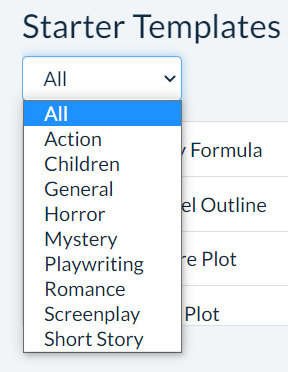
It then loads with a view of the different beats, showing just their title. You can then color code them, or leave them all the same color. You can rename the beats, add a new row, make them medium or smaller - which turns them into dots - flip it so it is vertical instead. You can also edit the structure of all of them.

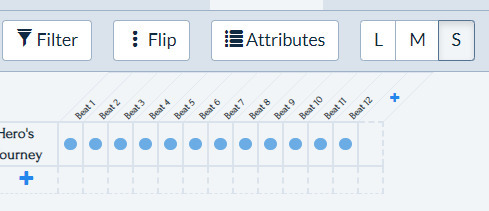
When you go into each Beat, you can view and move what chapter it's under, view what act it's in (of three), add and remove the characters in the beat once you've made them, add and remove places once they've been made, and change the color. You can also duplicate the beat. The Beat lists what should go in that beat - such as that it introduces what displeases that character with their world. Under 'attributes', you can add anything else, such as genre of the beat, emotion, songs, or otherwise. If you have a certain attribute you always want to add, you can set these in the main plot page.

There are also templates you can add depending on what happens in that beat. You can put the goal, motivation, and action; POV, time period, hook, goal, conflict, setback, etc.
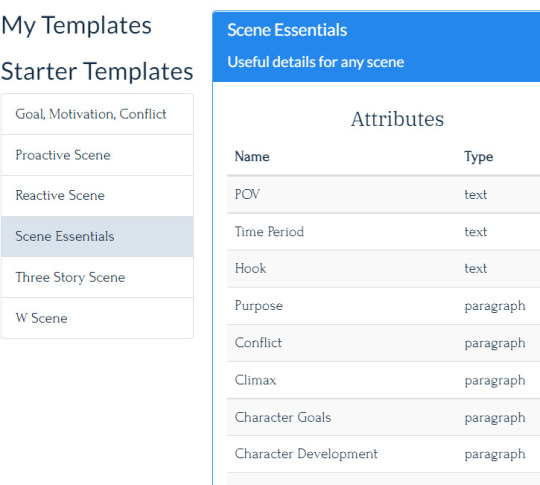
You can create characters, sort them under Main, Supporting, Other, give them a short description, and fill out a series of templates. This is the same for locations, except without templates. You can create your own tags to sort things by.
The last thing I really like about Plottr is that it exports really well.

Plottr is a plotting program, not writing, but I highly recommend it!
something to keep in mind, and while I love it to death: it does have a phone app! but the phone app does not work. As in: it is in the app store, and you can download it. But if you can get past the log-in page, it will crash. Or blue screen, or some other error.
0 notes
Text
Reedsy
Reedsy is a writing program, not a plotting program, but it's still worth a try!
No matter how many books you've started, it always opens a tutorial, though you're able to skip it.
You are able to edit your front matter right in Reedsy - this includes a dedication (with a max of 500 characters), properly formatted, an epigraph, a table of contents, a foreward, a preface, and an acknowledgement. There is also a copyright page to fill out - with your Pen Name, the edition of the book, year of publication, ISBNs, publisher, publisher's logo, collaborators and their roles, and various tickable clauses.
There is also back matter! You can include an author picture, a bio, a website link, a facebook link, a twitter link, and add any other links. There is also a place to add a link so the reader can sign up to a newsletter if you have one. If you have other works, you can include them in the back matter with pictures, titles, blurbs, and links.
You can view your goals and insights - you can set a title for your goal, how many words you want to write, and when you want it written by. You can also view how many words you've added or removed each day, and the sum total of added words. When you set a goal, it will tell you how many words you need to write a day to reach it!
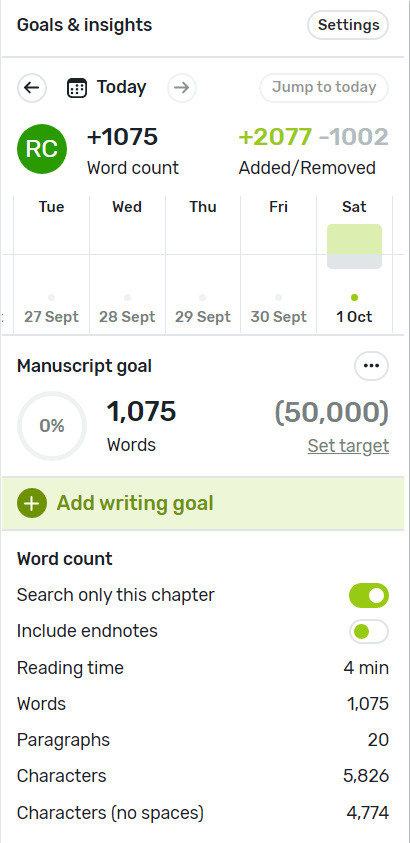
There is a tick box where you can add suggestions - this can be used for correcting typos, or adding entire sentences. This is best for editing. This text will show up green, and can be approved or declined at a later point.

You can also view a timeline of different versions that you've made, and revert to those like on google drive.
The find and replace works like any other, though you can choose whether you only want to search the chapter you have open or the entire story.
You can insert images, endnotes, and scene breaks!
There is a scissor button on the sidebar that you can use if you want to split a chapter up if you decide you found a good ending point! There's also a trash can so you can delete your current chapter, which will be saved in your timeline.
There are three 'skins' that effect the appearance of the story - only while you're working on it, it won't change your final project. Reedsy, Classic, and Romance. You can easily change your font size - but only between small, medium, and large, which I don't like. Same for line height.
You can also view your tutorial easily.
It's really easy to share your project - and I like how it's done! You can make a link that shares either the entire thing, or just certain chapters. And you can set an expiry date! These links can be revoked at any time!
Reedsy allows co-writing and collaboration.
You can assign a description/synopsis for your story, as well as a book cover, and when you export it there's a lot of formatting options! You can also set what stage you are at with that story.
With Reedsy, you can hire professionals! There are Editors, Designers, Publicists, Marketers, Translators, Ghostwriters, Website Makers, and Reviewers! Reedsy allows you to view requests you've sent for them, as well as your payments. You can also receive Prompts, and enter contests!
I really like Reedsy! I'd recommend it for people who are self-publishing, or know what they're doing. I do wish they'd let you organize your projects; at the moment it brings the one you've opened most recently to the top of the list, and you can't open them in a new tab.
9/10
1 note
·
View note
Text
LivingWriter
LivingWriter has templates. LIVINGWRITER HAS TEMPLATES.
It has Save the Cat. It has SAVE THE CAT.
You can choose to have a tutorial or not when making your story! It looks to be based off of Microsoft Word, but more streamlined.
Holy shit they also have an optional video tutorial as well.
You can set goals just for that chapter - and it will show you what percent you are there, and then how many words you have left, or a goal for the entire story.
You can name each chapter, and add a description! Each chapter is made under a beat, and the beat has a description depending on which template you use. You can add a new section under the beats for extra notes. Each chapter can be set to a certain status - such as draft.
When you are writing, you can add comments! You do this by highlighting the text you want to comment on. This will highlight that text a color, and then you can click on it to view and/or resolve it.
You are able to view your outline all at once, or one by one.
Under 'story elements', you can make your characters, objects, locations, and other. You can view these either as icons, names, and what they are, or as their name, what they are, and short description. Then you can make a description, and make separate text boxes with titles of your choice - so make your own templates!
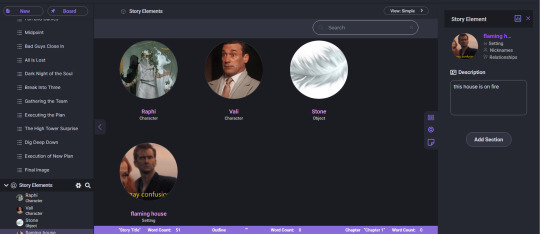
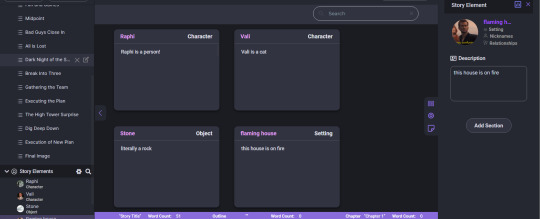
Once you've made a story element, if you start typing, then LivingWriter will suggest them to you! If I made a character named Raphael, then Raph will suggest Raphael to me! You can set colors for the text to turn, and disable auto complete for certain story elements.
While I didn't see it at first, LivingWriter does have a plotter proper. You can use a standard, square by square grid, or a free form grid where you can drag and drop blocks, and link them together. While these work well enough, I'd prefer if the template you pick - for example, Save the Cat - showed up there as well. While I can fill it out myself, having the blocks auto complete would save a lot of time.
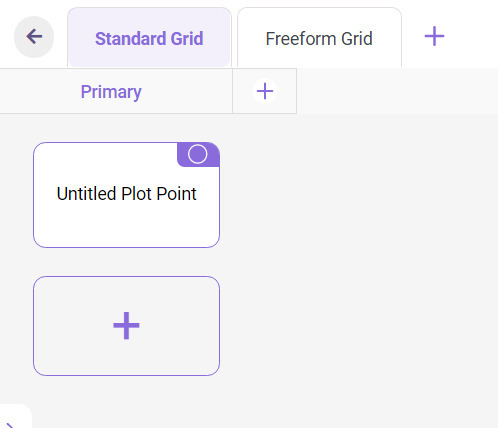

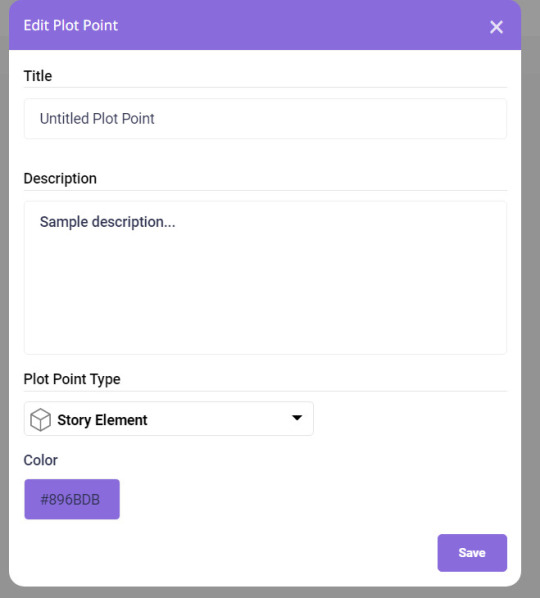
Overall I'd give LivingWriter an 8-9/10. I really like it!
0 notes
Text
Campfire Write
You can use all of Campfire Write's features without paying, but only to a point. You can only write 25,000 words in the manuscript writer on the free to use version, for example. Something to keep in mind!
Campfire Write is a program designed for people with big worlds and casts - so sci-fi authors, or historical - but it can be used by anyone!
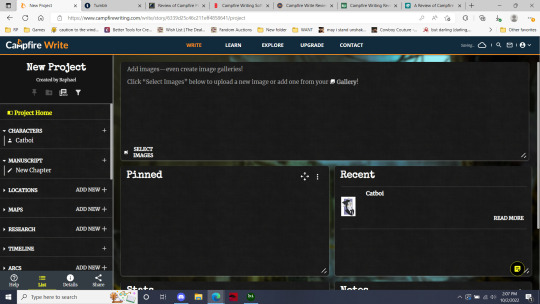
When adding a character to your cast, you have a place to add their name, subtitle, image, description, attributes, image bank, physical traits, personality traits, and statistics. Attributes are preselected - you choose from a list, then fill those out. The rest you put down your own, then a description, and statistics gives you a place for a name, a number, and a unit of measurement. You can also make templates if you like how you've set up a character! There's also a place to add a backstory, or overall notes, and any other pages you want.
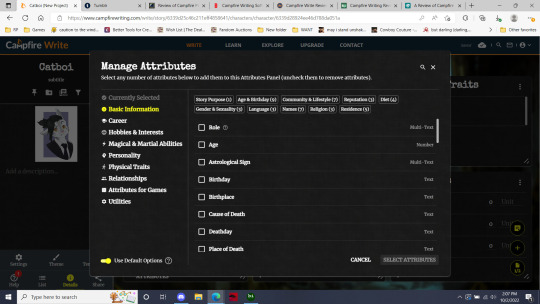
The tabs for Locations is the same as for characters.
There is a tab for maps - where you can save a zoomable image of your map.

The research tab is very customizable. You can add images, PDFs, text, videos, and urls. There's a separate notepad, and a separate place to add links to elements on Campfire.

The timeline tab lets you create as many plotlines as you need - so if you have romances, or subplots, etc - and you can draw connections between the various events. These events can have images (though they won't show in the overview), titles, a timestamp, and a description. Each event can also have attributes: including aliases, importance, whether it occurs on or offscreen, and have characters linked to them.

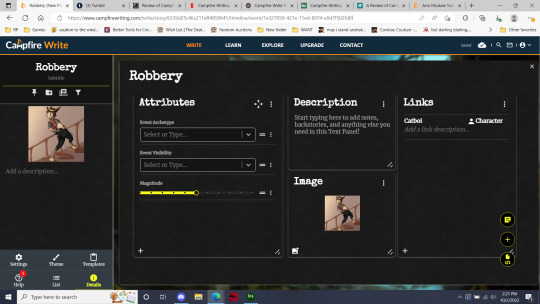
If you link a character to an event, you can track their arc! Using their arc, you can track how they change through the story.
Campfire allows you to make a Relationship web - you select what characters are shown, color code the lines, then draw lines between the characters!
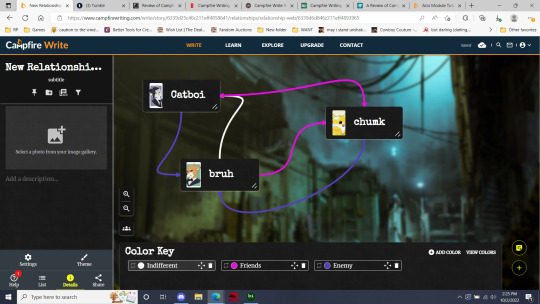
You can make an encyclopedia! I love it! It's basically a wiki page. You have a basic image spot, a one-sentence summary, a space for short facts/summary, and then for anything you need to write! Tables, data, just a text dump! It's great!
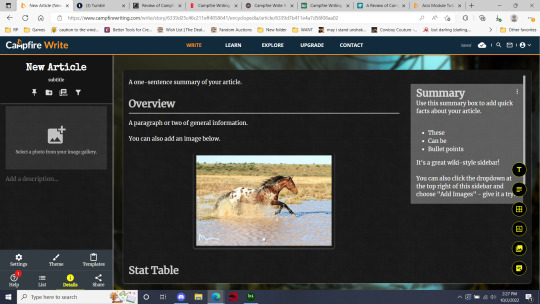
Campfire is focused around sci-fi, and so there is a tab for magic. There you can write the source: emotions/objects, provide images, how it's channeled, what the cost of the magic is and what it can't do (cool!), and any exceptions, as well as the origins, rarity, and timeline!

There's also an area for species! It's very similar to the character tab, but with spaces for habitats, species' averages, and similar things!
Culture is very similar to characters, with some areas for 'attributes', and then a box for history, and items is close to characters. Systems is similar to both.
Language is brilliant! You can write or insert an image for a symbol, write out how it's pronounced, then any modifiers. Then you can make a dictionary, then have a free tab. There's also a religions and philosophy plotter.
The writer itself is pretty nice! Although it doesn't have Times new Roman as an option?? You can pull up any element at any time to view (character, location, item, etc) on the side bar, make comments and notes.

For what it is - a world maker, 10/10. But there's no plotter, and the writer itself is thoroughly eh. (Again, no Times New Roman?) So as a writing program, 4/10.
Out of all the 'plotters' I've found, Campfire Writer is the best... for everything except actual plotting. For characters, worldbuilding, etc, nothing beats it. So if you already have a plotter and writer, but need something for worldbuilding, then Campfire Writer is perfect. But if you're looking for a writer/plotter, then no. The app also works really well, though.
Campfire Writer lets you subscribe to each module individually. So if your story has a massive cast of characters, but you don't need the manuscript writer, religions, or anything else, then paying for the characters module and maybe relationships might be worth it. You can subscribe monthly, annually, or pay a one-time fee.
1 note
·
View note